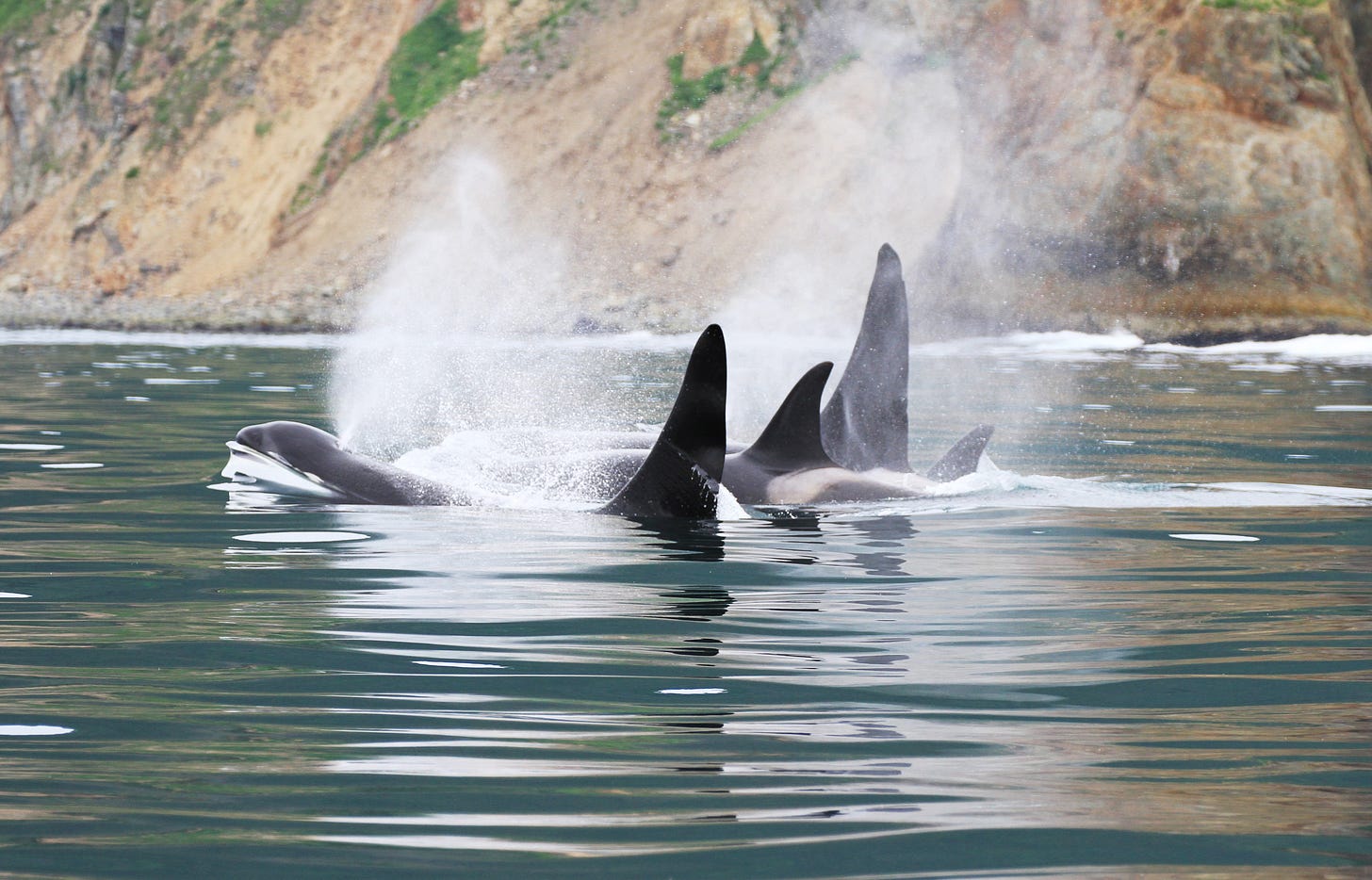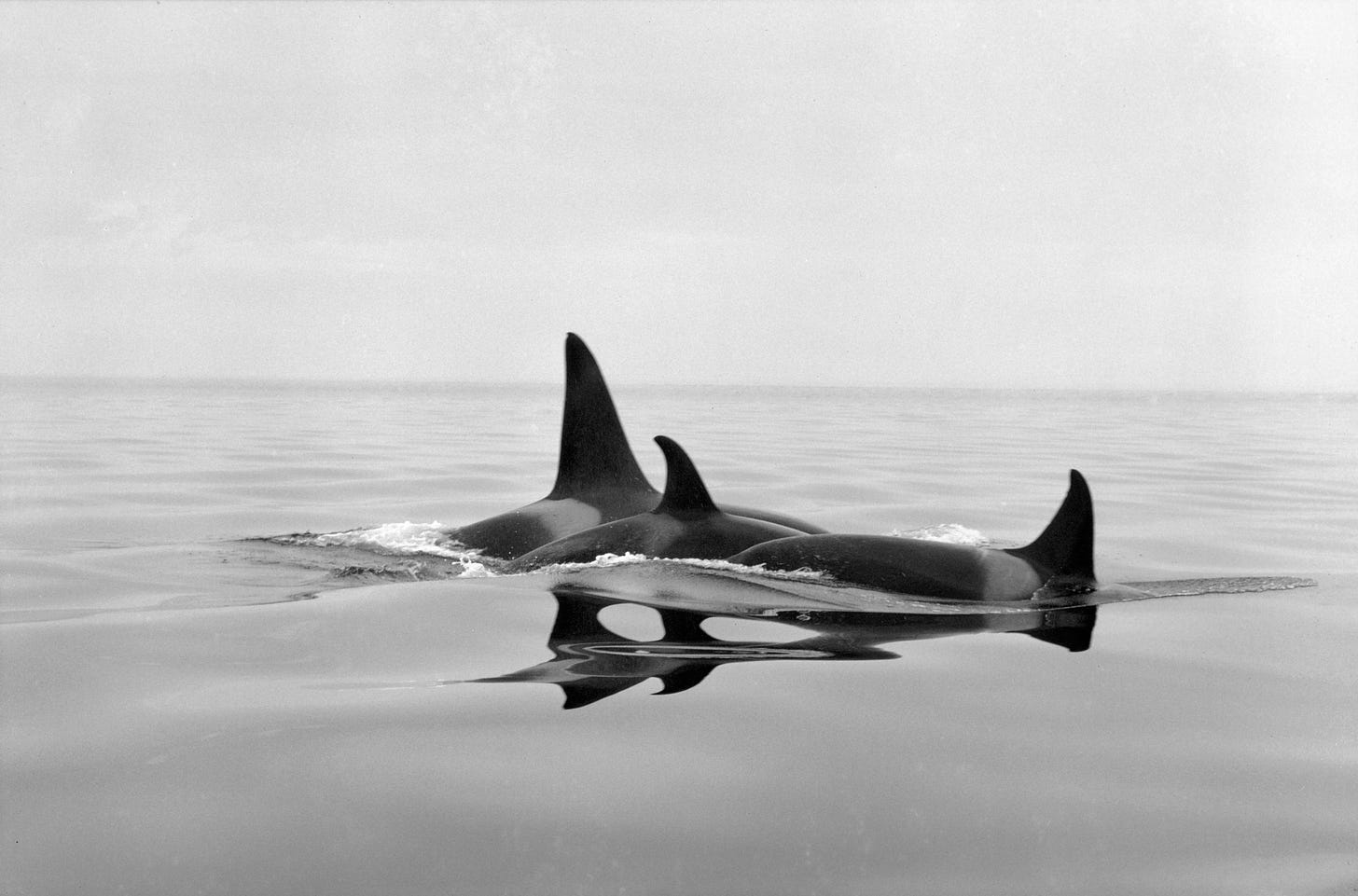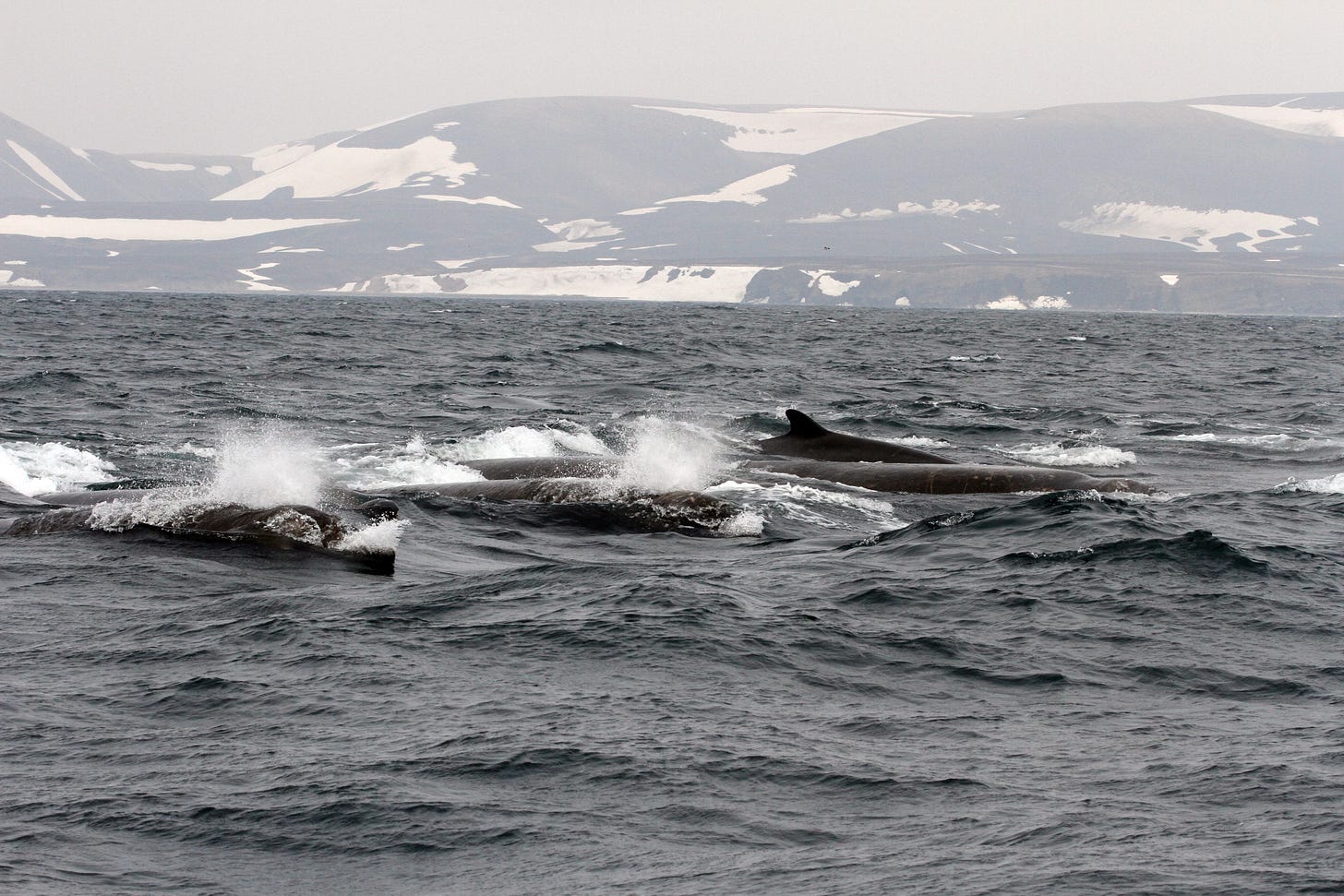Whales through a new lens, revisited
Part 1 of 2. The writer’s cut
Fifty years ago, whale research and conservation changed forever and moved into the era of studying living whale and dolphin societies that we know today. Before that, if you wanted to study any whale species, you worked almost exclusively with skulls and carcasses from whaling ships or from strandings on beaches — whale anatomy. Following the closing of most commercial whaling by 1972, whales gradually began to return to nearshore waters. There, a new generation of researchers, equipped with portable single lens reflex cameras with long lenses, began to identify whales as individuals and pods with lives of their own.
Photo: photo-ID in the NW Pacific, © Tatiana Ivkovich, FEROP
A few years ago, I wrote an article for Hakai—an investigative magazine focused on coastal and ocean nature, science and conservation—that told the story of how modern whale and dolphin research got started with individual photographic identification (photo-ID) pioneers including Roger and Katy Payne, Mike Bigg, Bernd Würsig, Ellie Dorsey, Jim Darling, Richard Sears, Steve Katona and Scott Kraus. Hakai ceased publication last year and the editorial team moved to bioGraphic, but you can read my original piece in the archive here. For substack readers, I have restored some of the sections of text that were edited for space and made a “writer’s cut”. I will make this available next week on my substack. This longer version reveals more of the seminal events that changed whale research and conservation forever and led to the way we work with and think about whales today.
Photo: Top Notch (A5) pod, mother Scar (A9) at right. Johnstone Strait, Vancouver Island. © Erich Hoyt.
In our own whale work since the 1970s, we applied these same research techniques to open up our understanding of the orcas of northern Vancouver Island. Later, in Kamchatka and in the Commander Islands, as the first whale researchers to work there, we applied these techniques focussed on orcas initially, followed by humpback, North Pacific right, Baird’s beaked and Sato’s beaked whales, creating catalogues for individuals of each of these Northwest Pacific populations.
If you sign up to my free substack, you will automatically get the link to the full story next week.
Photo: Baird’s beaked whales, Commander Islands, NW Pacific © Olga Filatova.



